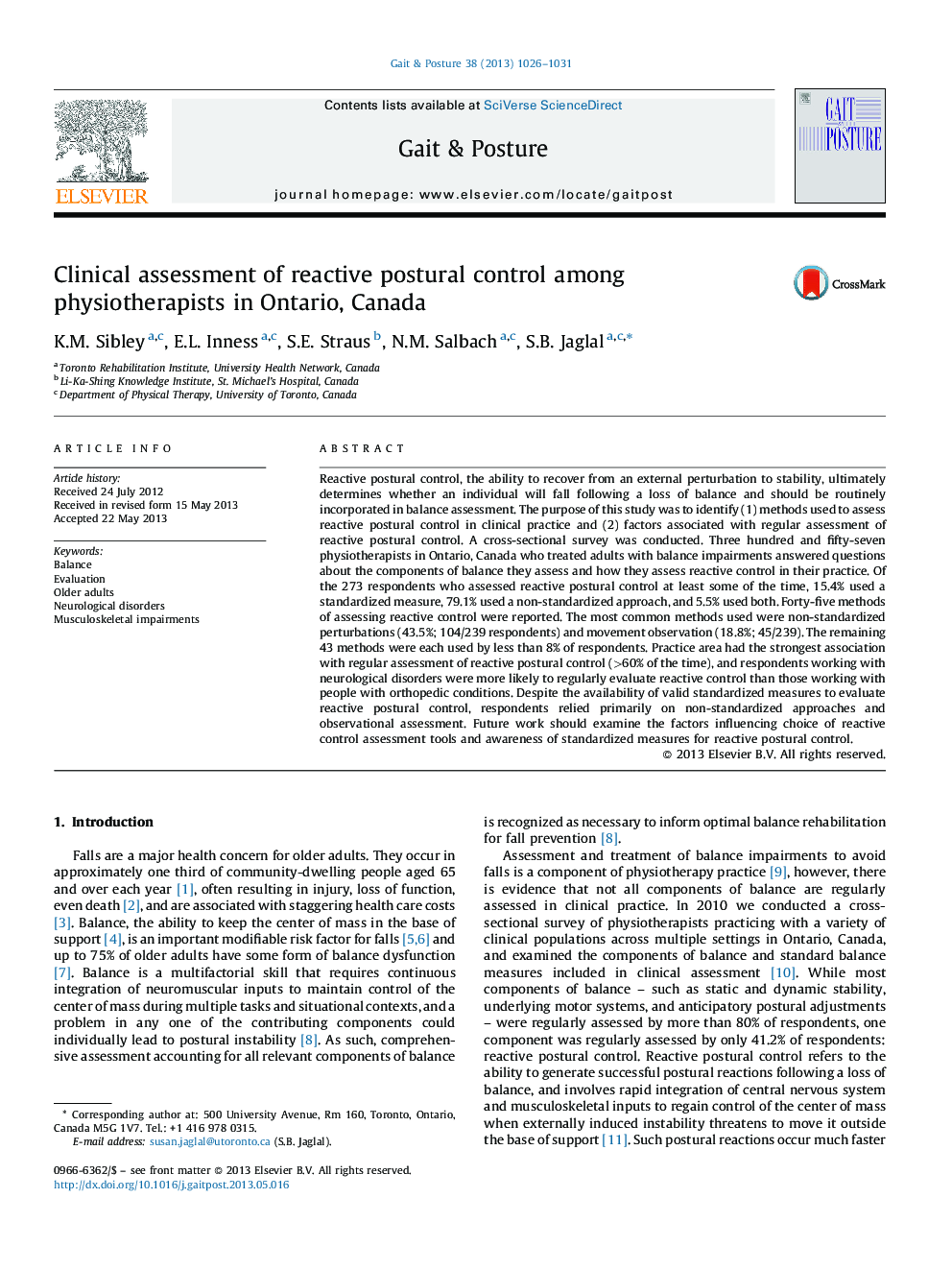| کد مقاله | کد نشریه | سال انتشار | مقاله انگلیسی | نسخه تمام متن |
|---|---|---|---|---|
| 6206842 | 1265652 | 2013 | 6 صفحه PDF | دانلود رایگان |
- This study examined how reactive postural control is assessed in clinical practice.
- 357 physiotherapists (PTs) completed a cross-sectional survey on current balance assessment practices.
- 45 methods were reported for assessing reactive balance, and most respondents used non-standardized perturbations or movement observation.
- PTs working in neurology were more likely to assess reactive postural control than PTs working in orthopedics.
- Future work should examine how clinicians choose assessment tools and promote awareness of standardized reactive control measures.
Reactive postural control, the ability to recover from an external perturbation to stability, ultimately determines whether an individual will fall following a loss of balance and should be routinely incorporated in balance assessment. The purpose of this study was to identify (1) methods used to assess reactive postural control in clinical practice and (2) factors associated with regular assessment of reactive postural control. A cross-sectional survey was conducted. Three hundred and fifty-seven physiotherapists in Ontario, Canada who treated adults with balance impairments answered questions about the components of balance they assess and how they assess reactive control in their practice. Of the 273 respondents who assessed reactive postural control at least some of the time, 15.4% used a standardized measure, 79.1% used a non-standardized approach, and 5.5% used both. Forty-five methods of assessing reactive control were reported. The most common methods used were non-standardized perturbations (43.5%; 104/239 respondents) and movement observation (18.8%; 45/239). The remaining 43 methods were each used by less than 8% of respondents. Practice area had the strongest association with regular assessment of reactive postural control (>60% of the time), and respondents working with neurological disorders were more likely to regularly evaluate reactive control than those working with people with orthopedic conditions. Despite the availability of valid standardized measures to evaluate reactive postural control, respondents relied primarily on non-standardized approaches and observational assessment. Future work should examine the factors influencing choice of reactive control assessment tools and awareness of standardized measures for reactive postural control.
Journal: Gait & Posture - Volume 38, Issue 4, September 2013, Pages 1026-1031
